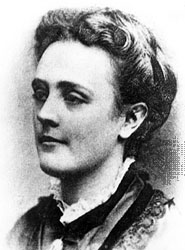LITR 5535 American Romanticism

Samuel Clemens (Mark Twain), N 1237-1244 (“The Notorious Jumping Frog of Calaveras County”). Sarah Orne Jewett, N 1586-1594. Charles W. Chesnutt, N 1630-1639 (“The Goophered Grapevine”). Gertrude Simmons Bonnin (Zitkala Sa), N 1792-1807. Black Elk & John G. Neihardt, N 1823-1836.
| Local Color / Regional Writing Discuss American Realism / Romanticism Changes in graduate Literature curriculum [break] business, assignments web-highlight: Kristen Bird Multicultural literature vs. Anglo-American "movements" poetry: George Otis |
|
Monday
20 November: Samuel Clemens (Mark Twain), N
1237-1244 (“The Notorious Jumping Frog of Calaveras County”). Sarah Orne
Jewett, N 1586-1594. Charles W.
Chesnutt, N 1630-1639 (“The
Goophered Grapevine”). Wovoka, N
1789-92. Gertrude Simmons Bonnin (Zitkala Sa), N
1792-1807. Black Elk & John G. Neihardt, N
1823-1836. Research Project due (within
72 hours of class).
selection reader / discussion leader:
poetry: Simon J. Ortiz, “Earth and Rain, the Plants & Sun,” N 2814-2815
poetry reader / discussion leader: George Otis
web highlight (final exams): Kristen Bird
Questions for today
Questions: What's Romantic or Realistic about these late 19c texts? Where do the two concepts cross each other, or their boundaries are blurred?
How does reading multicultural texts challenge or enrich traditional European-derived concepts like Romanticism and Realism?
Students who are taking both
What have you learned in either class that helps you understand the other?
Especially, what did you learn about Realism that casts light on Romanticism?
LITR 5536 American Realism syllabus
None of this is to leave out other students--welcome to draw in other courses that have discussed either Romanticism or Realism.
Changes in graduate Literature curriculum
1. Reduce number of specific courses like LITR 5535 American Romanticism and LITR 5536 American Realism
> LITR 5xxx American Literature [+ subtitle like Romanticism, Realism, novel, poetry, etc.]
2. hold grad seminars in specially devoted room with seminar table
3. reduce cap on classes from 25 to 20
Local Color / Regional Writing
Local Color / Regionalism as identifiable movement, style, or genre (periodization)
Useful "unit" for teaching in American literature surveys
Why a good teaching unit?
Not as big a movement as "Romanticism" or "Realism," etc.
Texts are mostly short stories--ready to compare, contrast in developing trends or styles
Sentiments tend to be familiar: nostalgia, loss of traditional life associated with earlier values
+ opportunities to involve diverse peoples, cultures
As a historical movement of literature, Regionalism has its major phase in the later 19th and early 20th centuries.
As
a style, its conventions or techniques can appear at various periods, much like
Romanticism generally.
major
American authors: Harriet Beecher Stowe (1811-1896), Sarah Orne
Jewett (1849-1909), Mary E. Wilkins Freeman (1852-1930), Kate Chopin
(1851-1904), Bret Harte (1836-1902), George Washington Cable (1844-1925),
Charles C. Chesnutt (1858-1932), Willa Cather (1873-1947)
later
writers in this tradition: Zona Gale (1874-1938), William Faulkner
(1897-1962), Flannery O'Connor (1925-1964), Eudora Welty (1909- ), Marjorie
Rawlings (1896-1953), Katherine Anne Porter (1890- )
stylistic
tendencies:
short story is dominant genre; local dialects; legends or folk tales; stories
often "framed" by an outside narrator who gives over to a dialect
narrator
historical background to local color
historical division of U. S. Civil War, 1861-65: Romanticism to Realism
Realism--"High Realism": James, Wharton, Howells, Twain
changes brought by Civil War
slavery > freedom, equality (heavily qualified by place, time)
a dream-come-true means the end of a dream
"the story of America" shifts from one of human rights, liberty, equality to economic change, corporatism, industrialization, urbanization
rural > urban (always accelerating)
states' rights > federal power, triumph of "union"
mixed economy > industrial economy
tendency to conformity
states, regions > union
(improvement of transportation, communication)
sense of people as citizens of regions gives way to sense of people as "Americans"
cf. recent articles about "disappearing Texan" on account of in-migration from other parts of country, world, with different standards
E. g., educators teaching teachers-in-training not to say "fixin' to" or "pitcher" (for "picture") or to talk loudly about personal issues in public places
overall, an ongoing process that can be connected to
industrialization: mass-production of identical units
Holiday Inn: "best surprise is no surprise"
In a strange town, look for a McDonald's as guarantee of predictable food (and restrooms)
previous encounters with local color or regionalism: Irving, maybe Hawthorne, Stowe (pp. 773, 791-2, 793)
realistic details associated with particular time and place
romantic
survivals:
rural landscapes; folk manners; kinship systems; sentimental characters;
nostalgia
realistic style
"Jumping Frog" 1242 gob of mud
local details (e. g., "Wilmington Road" in "Goophered Grapevine")
humor as realism
recall that Romanticism is not distinguished for its sense of humor. Our only truly comic pieces, "Sleepy Hollow" and "Rip Van Winkle" by Irving, are early Romantic pieces. Stowe does some humor with slaves, but recall Stowe as "mother" of regional writing with some realistic tendencies.
Dreamers take themselves seriously. Realists poke holes in dreamers' balloons, deflate pretensions, avoid pretensions.
"Jumping Frog"
1237 deadpan lecturing
1240 never smiled, never frowned
1242 mock-heroic
"White Heron"
1592 [heroic simile; contrast Twain 1242] (i. e., Jewett far more Romantic than Twain because similes elevate rather than diminish)
"Goophered Grapevine"
1638 killed him fus
realism as history
Jewett, Twain, Chesnutt, Zitkala-Sa all published in Atlantic Monthly
Atlantic Monthly edited by William Dean Howells, leading Realistic novelist with Twain, Wharton, James
Howells's major novels: The Rise of Silas Lapham, A Hazard of New Fortunes, A Modern Instance
As editor of Atlantic Monthly, Howells for Realists is comparable to Emerson for Romantics, Franklin for Founding Fathers, Ezra Pound for Modernists
Author-editors at center of publishing and personal network of leading authors
an occasional stylistic pattern: "framing"
"Jumping Frog" 1240
shifts from cosmopolitan outside narrator to provincial dialect speaker
"Goophered Grapevine" 1632-33
1630 [frame, but difference, compared to Twain, is not just geographical but ethnic]
Other writers, including Jewett (e. g., "The Foreigner") use this framing device
"White Heron" 1589 old woman’s quaint talk
Joel Chandler Harris, Uncle Remus: His Songs and His Sayings, 1880
purposes of framing story
eases reader into dialect
sets up present-past dialogue (i. e., outside narrator is present or future, while dialect speaker represents endangered nostalgic past)
Romantic attitudes, esp. nostalgia and disdain for industrial technology vs. organicism
romantic
survivals:
rural landscapes; folk manners; kinship systems; sentimental characters;
nostalgia
realistic style
"Jumping Frog" 1242 gob of mud
local details (e. g., "Wilmington Road" in "Goophered Grapevine")
humor as realism
recall that Romanticism is not distinguished for its sense of humor. Our only truly comic pieces, "Sleepy Hollow" and "Rip Van Winkle" by Irving, are early Romantic pieces. Stowe does some humor with slaves, but recall Stowe as "mother" of regional writing with some realistic tendencies.
Dreamers take themselves seriously. Realists poke holes in dreamers' balloons, deflate pretensions, avoid pretensions.
"Jumping Frog"
1237 deadpan lecturing
1240 never smiled, never frowned
1242 mock-heroic
"White Heron"
1592 [heroic simile; contrast Twain 1242] (i. e., Jewett far more Romantic than Twain because similes elevate rather than diminish)
"Goophered Grapevine"
1638 killed him fus
realism as history
Jewett, Twain, Chesnutt, Zitkala-Sa all published in Atlantic Monthly
Atlantic Monthly edited by William Dean Howells, leading Realistic novelist with Twain, Wharton, James
Howells's major novels: The Rise of Silas Lapham, A Hazard of New Fortunes, A Modern Instance
As editor of Atlantic Monthly, Howells for Realists is comparable to Emerson for Romantics, Franklin for Founding Fathers, Ezra Pound for Modernists
Author-editors at center of publishing and personal network of leading authors
Romantic attitudes, esp. nostalgia and disdain for industrial technology vs. organicism
"Jumping Frog"
1240 winter of 49, splume not finished
"Goophered Grapevine"
1632 decayed gate-posts, victim to the fortunes of war
1633 living over again his life on the old plantation
1635 [sympathy, sympathetic magic]
1637 [intensive chemical agriculture]
1638 northern capital in development of southern industries
1638 our colored assistants
1639 wages I pay him equivalent to anything he lost
"White Heron"
1588 crowded manufacturing town
1589 seemed like a hermitage
1591 great pine-tree, last of its generation
1592 heart to heart with nature
1593 vast and awesome world
web-highlight: Kristen Bird
Two quasi-universals inform our receptivity to Romanticism.
1. Humans have to be taken care of at an early age, giving them a memory of a golden age.
2. Since "modernity," there have always been more people and development in any age than existed in the previous age. Therefore each generation has the experience of a "smaller world" that is subsequently engulfed and destroyed by modern growth and change.
applications:
Romanticism rises during "Great Transformation," in which increasing numbers of people move from traditional rural worlds in which everyone knew each other into the modern, urban city of strangers
"local color," reminiscence of country ways during industrialism's first big kick
Kristen's web highlight on "Byronic hero"
earlier comment on emergence of Byronic hero during Great Transformation
Byronic hero as culture-hero who opposes the established framework of society. Thereby the byronic hero cooperates with modernization, which constantly undermines and replaces any established system or code.
Multicultural literature vs. Anglo-American "movements"
How does reading contemporaneous literature by multicultural authors challenge or enrich Local Color / Regional genre?
Zitkala-Sa & Black Elk
The following themes were visited briefly when reading "The Cherokee Memorials" and William Apess's "An Indian's Looking-Glass for the White Man":
1. European-Americans tend to romanticize the American Indian either positively or negatively
Uncas, Chingachgook as "noble savage"
Magua as vengeful, untrustworthy renegade
god / dog syndrome: people are represented either as gods or as dogs but not as people (i. e., somewhere in between)
2. It is difficult to establish how much the American Indian really fits the categories of Romanticism, or how much it's simply a category that white writers make fit.
Indians' traditional connections to land and nature coincide with European American nostalgia (but not with Euro-Am behavior, which is highly mobile and "universalized"--and maybe not with adaptations of modern Indian lifestyles, which are increasingly urban)
"White people mourn the Indian who died and ignore the Indian who lives."
Indians may act out Romantic expectations, but such behaviors or signs may be only a willing illusion in service of some other identity.
Insofar as Indians fit Romantic stereotypes, they're probably not being Indian at all but only white projections. Moments of Indian identity tend to be surprising, frustrating, or elusive to white expectations.
Black
Elk & John G. Neihardt, N
1823-1836.
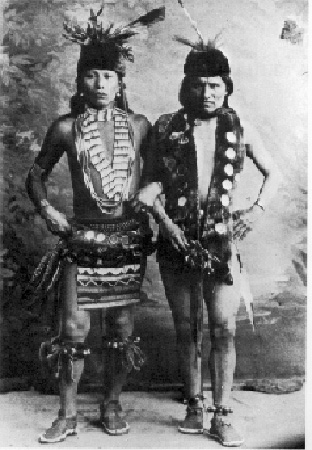
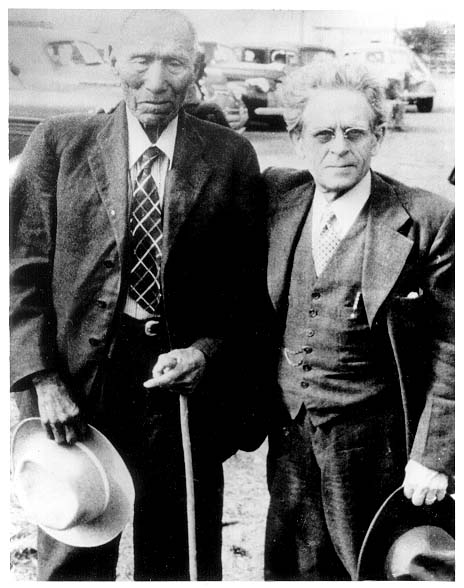
1824 Neihardt’s own strong mystical Christianity obscures Lakota religion [ = Transcendentalism?]
1824 iron road cut bison herd in two
1825 clouds / mountains / thunder beings
1827 cloud > tepee; rainbow > door
1831 little chickens under mother sheo’s wing
1831 clouds of baby faces
1832 each one seemed to have his own little vision that he followed and his own rules
1836 my mother and my father didn’t seem to know I had been so far away
Gertrude
Simmons Bonnin (Zitkala Sa), N
1792-1807.
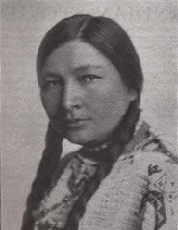
question: What elements of Zitkala-Sa's writings or life become invested with Romantic appeal? What parts resist?
What elements of Zitkala-Sa's writings or life become invested with Romantic appeal?
1794 free as wind, bounding deer
1795 if the paleface does not take away from us the river we drink
1795 we were once very happy
1797 stars in heavens / star on brow
1802 narrator and squirrel, cf. Sylvia
What parts resist?
1792 mixed-blood
1793 Atlantic Monthly cf 1630 Chesnutt
1793 trickster figure
1794 no fear save of intruding myself upon others [x-romanticism]
1794 not wholly conscious of myself
1795 driven like a herd of buffalo
1796 [oral culture]
1796 [leisure, community]
1796 [gossip]
1797 practical observation lessons in beadwork
1798 set forms > sufficiently characteristic
1798 dignified little individual [x-childhood, separate existence]
1800 conscious of being watched
1800 the law of our custom, x-embarrass me
1801 [leisure, community]
1801 sacred ground [legend]
manipulation, reversal of European-American legends
1803 missionaries and marbles and ice
1803 first turning away from easy, natural flow of my life
1803 take away Indian boys and girls
1803 going to a more beautiful country
1803 buffalo skin > canvas > logs
1804 Judewin had told me of the great tree where grew red, red apples and how we could reach out our hands and pick all the red apples we could eat.
1804 > ride on the iron horse
1805 education
conclusion:
Most Americans broadly like, appreciate, or express Romantic attitudes and narratives.
Americans tend to universalize or extend their wishes or attitudes to all other peoples at all other times.
Be wary that such patterns of thought are familiar, convenient, and effective, but may amount to no more than useful fictions for processing a larger or more complicated reality.
Charles
W. Chesnutt, N 1630-1647 (“The
Goophered Grapevine”).
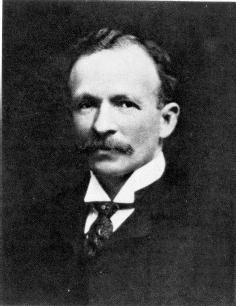
1630 Atlantic
Monthly
1630 [frame, but difference, compared to Twain, is not just geographical but ethnic]
1631 ironic drama played out between master and slave [cf. Stowe? + Douglass]
1631 interracial marriage
1635 [sympathy, sympathetic magic]
1637 [intensive chemical agriculture]
1638 northern capital in development of southern industries
1638 our colored assistants
1639 wages I pay him equivalent to anything he lost
business
LITR 5737: Literary and Historical Utopias
assignments
Research project absolutely due by Friday, 24 November--by 2pm, or let me know what's going on
receipt acknowledged within 24 hours (except on Saturday?)
posted to webpage
read and returned before final exam date (4 Dec.)
students may ask for any webpage contributions to be removed after final grade reports are sent out.
Monday 27 November: Claude McKay, N 2082-2086. Zora Neal Hurston, N 2096-2109. Jean Toomer, N 2120-2126. Langston Hughes N 2225-2232. Countee Cullen, N 2245-2249; F. Scott Fitzgerald, N 2126-2143 (“Winter Dreams”).
selection reader / discussion leader: Brouke M. Rose-Carpenter
poetry: Gwendolyn Brooks, "kitchenette building," N 2698
poetry reader / discussion leader: Crystal Reppert
McKay, Hurston, Toomer, Hughes, Cullen are all associated with the "Harlem Renaissance," the great movement in African American literature in the 1910s-20s
"Romanticism" is a European-American inheritance. How well does it fit an African American movement?
How vary light-dark values of European gothic?
(That is, European gothic traditionally associates white or light with good and black or dark with evil. It's obvious that this is a loaded equation for an African American writer, so how do authors of the Harlem Renaissance work with such forms?)
Beware "primitivism"--the glorying of the exotic, akin to slumming
F. Scott
Fitzgerald associated with "Jazz Age," which connects a little with
Harlem Renaissance through jazz institutions like the Cotton Club and jazz
masters like Duke Ellington and others.
Fitzgerald—last blossoms of Euro-Am Romanticism?
How has Realism changed Romanticism? To what areas is Romanticism limited?
Monday 4 December: Final exam. Students may take final exam in-class or by email.
"Romantic universals"
"universals" = "universal truths"
example: "All people are created equal" with natural rights of life, liberty, and pursuit of happiness.
In literary studies, "universal truths" treated with increasing skepticism in recent decades--what was proclaimed as "universal" could sometimes prove a cover for patriarchy or other traditional codes of dominance
> historicism: locating ideas within history that produced them, recognizing special conditions and limits
Our class has done that with emphasis
Objective
1b. The Romantic Period
· To observe Romanticism’s concentration in the late 18th through the 19th centuries and its co-emergence with the rise of the middle class, the city, industrial capitalism, consumer culture, and the nation-state.
To identify and criticize ideas and attitudes associated with Romanticism, such as desire and loss, rebellion, nostalgia, idealism, the gothic, the sublime, the individual in nature or separate from the masses.
· The Romantic impulse may be as simple as a desire for anything besides “the here and now”—or “reality”; thus the quest or journey of the romance narrative involves crossing physical borders or transgressing social or psychological boundaries in order to attain or regain some transcendent goal or dream.
· A Romantic hero or heroine may appear empty or innocent of anything except readiness or desire to transform or self-invent.
Samuel
Clemens (Mark Twain), N 1237-1244
(“The Notorious Jumping Frog of Calaveras County”).

1237 deadpan lecturing
1238 x-southern romanticism
1240 never smiled, never frowned
1240 winter of 49
1242 mock-heroic
1242 gob of mud
Charles
W. Chesnutt, N 1630-1647 (“The
Goophered Grapevine”).

1630 Atlantic
Monthly
1630 [frame, but difference, compared to Twain, is not just geographical but ethnic]
1631 ironic drama played out between master and slave [cf. Stowe? + Douglass]
1631 interracial marriage
1631 dramatic changes . . . by the Harlem Renaissance
1632 [white, citified narrator]
1632 decayed gate-posts, victim to the fortunes of war
1633 living over again his life on the old plantation
1634 root [cf. Douglass]
1634 fever x gopher
1635 [sympathy, sympathetic magic]
1637 [intensive chemical agriculture]
1638 killed him fus
1638 northern capital in development of southern industries
1638 our colored assistants
1639 wages I pay him equivalent to anything he lost
Gertrude
Simmons Bonnin (Zitkala Sa), N
1792-1807.

1792 mixed-blood
1793 musical abilities
1793 Atlantic Monthly cf 1630 Chesnutt
1793 trickster figure
1794 free as wind, bounding deer
1794 no fear save of intruding myself upon others [x-romanticism]
1794 not wholly conscious of myself
1795 if the paleface does not take away from us the river we drink
1795 we were once very happy
1795 driven like a herd of buffalo
1796 [oral culture]
1796 [leisure, community]
1796 [gossip]
1797 stars in heavens / star on brow
1797 practical observation lessons in beadwork
1798 set forms > sufficiently characteristic
1798 dignified little individual [x-childhood, separate existence]
1800 conscious of being watched
1800 the law of our custom, x-embarrass me
1801 [leisure, community]
1801 sacred ground [legend]
1802 narrator and squirrel, cf. Sylvia
1803 missionaries and marbles and ice
1803 first turning away from easy, natural flow of my life
1803 take away Indian boys and girls
1803 going to a more beautiful country
1803 buffalo skin > canvas > logs
1804 Judewin had told me of the great tree where grew red, red apples and how we could reach out our hands and pick all the red apples we could eat.
1804 > ride on the iron horse
1805 education
Black
Elk & John G. Neihardt, N
1823-1836.


1824 Neihardt’s own strong mystical Christianity obscures Lakota religion [ = Transcendentalism?]
1824 iron road cut bison herd in two
1825 clouds / mountains / thunder beings
1827 cloud > tepee; rainbow > door
1831 little chickens under mother sheo’s wing
1831 clouds of baby faces
1832 each one seemed to have his own little vision that he followed and his own rules
1836 my mother and my father didn’t seem to know I had been so far away
Sarah
Orne Jewett, N 1586-1594.
1586 precis of historical change
1588 crowded manufacturing town
1589 noisy town, red-faced boy
1589 boy’s whistle, determined, and somewhat aggressive
1589 primitive housekeeping and dreary squalor
1589 seemed like a hermitage
1589 old woman’s quaint talk
1590 son a great wanderer
1590 stuffed and preserved
1591 great pine-tree, last of its generation
1592 heart to heart with nature
1592 [heroic simile; contrast Twain 1242]
1592-3 personification
1593 vast and awesome world
